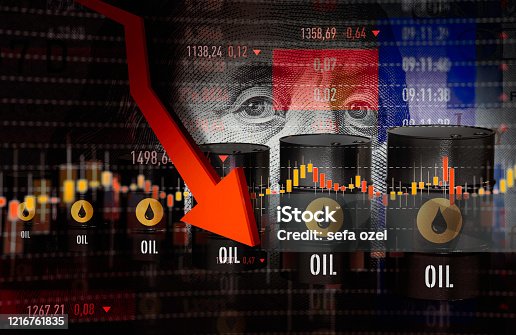The global oil market is facing a growing risk of oversupply as production rises more rapidly than demand, according to the International Energy Agency (IEA).
In its latest monthly report released, the Paris-based agency projected that world oil supply will increase by 2.7 million barrels per day (bpd) in 2025, a sharp revision from its previous forecast of 2.5 million bpd.
The IEA expects a further increase of 2.1 million bpd in 2026, raising concerns that the global market could see a significant surplus next year if demand fails to keep pace.
The upward revision comes as OPEC+—the alliance of the Organization of the Petroleum Exporting Countries, Russia, and allied producers—accelerates its plan to unwind production cuts. The group has been gradually restoring output after years of coordinated reductions aimed at stabilizing prices.
But with OPEC+ moving faster than initially scheduled, the IEA warned that extra supply is weighing heavily on the market.
“Oil markets are being pulled in different directions by a range of forces, with the potential for supply losses stemming from new sanctions on Russia and Iran coming against a backdrop of higher OPEC+ supply and the prospect of increasingly bloated oil balances.”
International Energy Agency (IEA)
The oversupply concerns have already dragged prices lower this year. Brent crude was trading just below $68 a barrel at 01100 GMT on Thursday, steady after the IEA’s publication but far from the $70 levels seen earlier in 2025.
Demand Rising, But Not Fast Enough

The IEA slightly revised upward its forecast for oil demand growth in 2025 to 740,000 bpd, an increase of 60,000 bpd compared to last month’s estimate. The agency cited stronger-than-expected consumption in advanced economies as a factor.
Even so, demand growth is lagging far behind supply. The IEA’s projections remain on the conservative end of industry forecasts, reflecting its view that the global shift toward renewable energy and electric vehicles will accelerate faster than many oil producers anticipate.
By contrast, OPEC has consistently predicted higher demand growth, arguing that oil will remain a cornerstone of global energy supply for decades. The cartel is expected to release its updated forecasts later on Thursday.

The IEA’s report issued its starkest warning yet on the supply-demand imbalance. It projected that global inventories will rise by an “untenable” 2.5 million bpd on average in the second half of 2025 as supply far outpaces consumption.
Looking further ahead, the agency said supply in 2026 could exceed demand by 3.3 million bpd. This growth would be fueled not only by OPEC+ but also by non-OPEC producers such as the United States, Canada, Brazil, and Guyana, all of which are expected to expand output.
The latest figures represent an even more bearish outlook than last month’s report, which had implied a 2026 surplus of nearly 3 million bpd.
Geopolitical Wildcards Could Shift Balance

Despite the gloomy surplus projections, the IEA acknowledged that multiple uncertainties could reshape the market.
These include escalating geopolitical tensions, evolving global trade policies, and the impact of fresh sanctions on Russia and Iran, both of which remain major suppliers despite restrictions.
The IEA said, “There are a number of potential twists and turns ahead… that could yet alter market balances,” stressing that sanctions and political instability could easily disrupt flows and offset some of the expected surplus.
One factor currently supporting prices is China’s ongoing crude stockpiling. By building up its reserves, Beijing has kept spot market prices stronger than longer-dated futures contracts, a market structure known as backwardation.
This usually signals tighter supply conditions in the immediate term, even if future balances point to oversupply.
The oil industry is now caught between competing pressures: the rapid increase in supply from both OPEC+ and independent producers, and the uncertainties around demand resilience and geopolitical disruptions.
For oil-importing nations, the prospect of a prolonged surplus could translate into lower energy costs, offering relief to economies battling inflation. For producers, however, the IEA’s warnings highlight the risks of continued price weakness if supply growth is not carefully managed.
For now, the IEA’s latest report suggests that unless demand growth accelerates dramatically or geopolitical shocks curtail supply, the global oil market could be heading for one of its most significant gluts in years.
READ ALSO: Investors Snub T-Bills As Government Struggles to Raise GH¢6.7bn, Settles for GH¢3.2bn



















